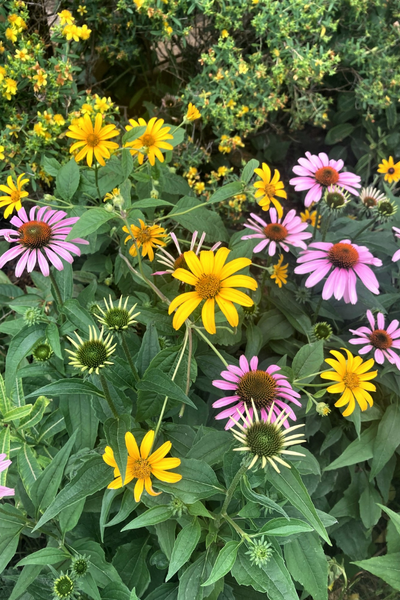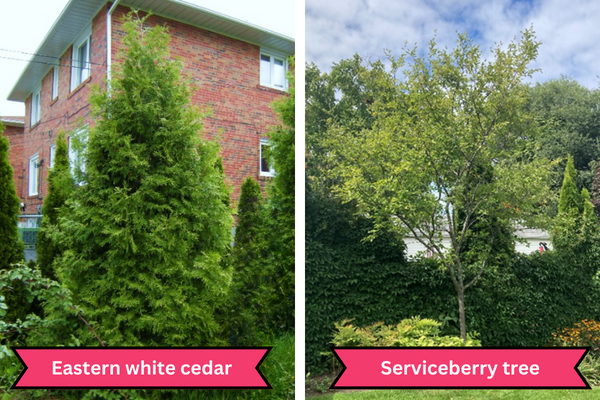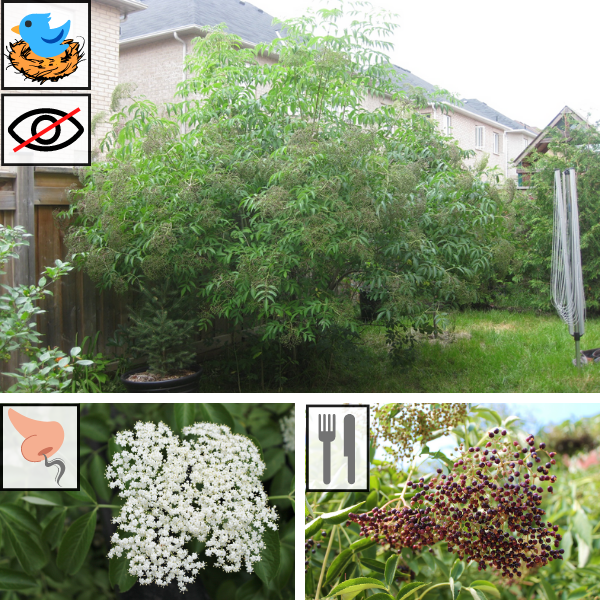The urban forest is made up of all the trees and understory plants growing in private yards, in parks and ravines and along streets. When it comes to planting in urbanized areas however, your outdoor space can be limited. For example, adding a new, large-growing tree to a small yard may not be the best fit as it has the potential to overtake the space. That said, it does not mean small yards cannot play a role in helping to grow and support our urban forest. In fact, they can be great opportunities for growing a variety of integral understory plants! If you have a small yard and are unsure if a large-growing tree will fit, try these three planting alternatives.
Native Perennials
Although perennial refers to any plant that goes dormant in the winter and returns in the spring, it is more commonly used to distinguish small, non-woody plants from trees and shrubs. Perennials include flowers, grasses and ferns, and come in a wide array of colours, sizes, textures and bloom times. For homeowners with small yards, perennials offer diversity without having to sacrifice much space. Whether a yard is sunny, shady, wet or dry, there is a native perennial out there that will work for any growing space.

Small Native Trees
Small-growing trees keep the tree planting option on the table for homeowners without having to commit to the sizeable height and spread of a mature large-growing tree. Like larger-growing trees, small-growing trees also offer a wide range of desirable characteristics. Trees like the eastern white cedar, for example, can reach approximately 20 feet in height while only spreading seven to 10 feet wide, making it a perfect fit for yards needing year-round privacy that may be tight on space. Others, like the serviceberry tree, offer a classic tree form, but on a smaller scale. The right tree will depend on each property’s growing conditions, so be sure to check your soil and sunlight conditions before selecting a species to ensure it is the right fit for your yard.

Native Shrubs
Native shrubs provide a wide selection of planting options for small yards. Ranging from two feet to 15 feet in height and width, native shrubs have lots to offer including flowers, edible fruit, privacy and wildlife habitat. The common elderberry, for example, is a planting option that requires zero compromise. This native shrub has edible fruit, fragrant white flowers, lovely yellow fall colour and dense foliage for creating privacy. It also provides food and shelter for songbirds such as northern flickers, nuthatches and bluebirds.

Whether you have a small or large yard, LEAF offers a variety of native plants to fit your space including perennials in our Native Garden Kits, shrubs and trees. Our Small Yard Shrub Bundle is designed with small spaces in mind and is perfect for individuals who are just getting started. If you are interested in planting this year, apply or contact us today!
Jess Wilkin is the Residential Planting Programs Operations Supervisor and an ISA certified arborist at LEAF.
LEAF offers a subsidized Backyard Tree Planting Program for private property. The program is supported by the City of Toronto, the Regional Municipality of York, the City of Markham, the Town of Newmarket, the Regional Municipality of Durham, the Town of Ajax, the Township of Brock, the Municipality of Clarington, the City of Oshawa, the City of Pickering, the Township of Scugog, the Town of Whitby, Ontario Power Generation and Ontario Trillium Foundation.
